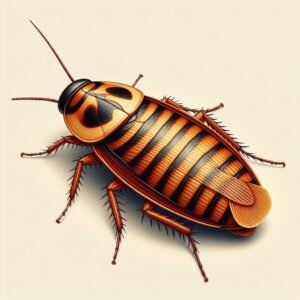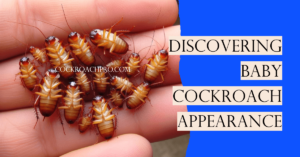Get Rid of American Cockroaches: 18 Expert Tips to Stop and Prevent Infestations for Good
Finding cockroaches in your home can be an incredibly unsettling experience. Of all the cockroach species, the American cockroach is one of the most reviled. With its large size and ability to rapidly reproduce, this pest can easily overrun a home when left uncontrolled.
Understanding why they enter our living spaces and implementing targeted removal and prevention techniques are key to ridding yourself of an American cockroach infestation.
This comprehensive guide breaks down critical need-to-know details about these pests, as well as provides 18 insightful tips to eliminate an existing population and stop more from invading.
What is the American Cockroach?
Distinguished by its reddish-brown coloration and glossy body, the American cockroach belongs to the genus Periplaneta and has the species name Periplaneta americana. These insects are one of the largest common house-infesting species, growing over 1.5 inches long as adults. Their size allows them to be aggressive foragers.
American cockroaches have some key physiological features including:
- A set of long, spiny legs optimized for speed
- Antennae to pick up chemical cues in the environment
- Flat bodies that can squeeze through cracks and crevices as narrow as a quarter-inch wide
Though named after America, these pests are believed to have originated on the African continent. They likely traveled to North America on ships carrying enslaved people. Today, American cockroaches reside anywhere with adequate warmth, food, water, and shelter, including many human dwellings.
These insects live up to about 700 days and can reproduce rapidly under suitable conditions. A single fertilized female produces an average of 150 young after mating just once. She creates a protein-rich egg capsule called an ootheca that protects the embryos as they develop.
Given long enough, a small founder population of American cockroaches can give rise to an imposing infestation if not controlled. Let’s examine why they end up inhabiting our homes in the first place.
What Attracts American Cockroaches to Your House?
American cockroach’s predilection for living alongside humans stems from their generalist habits. As scavenging omnivores, they can thrive on nearly any organic materials as food sources, including:
- Plant-based food crumbs and unfinished pet food
- Starchy residues stuck on unwashed dishes, pans, and surfaces
- The glue and paper components in envelopes or cardboard boxes
- Human or pet hair and skin flakes accumulating in floor cracks
Additionally, the warmth, water, and humidity found within homes suit their tropical ancestry. They easily gain entrance by marching through sewer pipes, cracks in the foundation, spacing underneath exterior doors, and any gaps or holes granting access.
Once settled inside, American cockroaches congregate in humid zones rarely disturbed by human activity. Kitchens, bathrooms, basements, attics, and spaces behind appliances offer suitable harborage.
Here females produce sticky ootheca cases securely fastening egg capsules until they hatch. The emerging nymphs remain hidden while maturing into reproductive adults in just over a year.
Left alone, increasing numbers of American cockroaches hide out during daylight hours then creep forth at night to pilfer indoor food supplies. The contaminative droppings, sheddings, and foul odors lingering in their wake represent threats to human health and homes. Luckily there are several ways to gain the upper hand against them.
9 Tips to Effectively Remove an American Cockroach Infestation
Tackling an American cockroach infestation requires diligence and patience. Integrating a variety of mechanical, cultural, and chemical removal tactics works best to systematically decrease their numbers. These 9 techniques curb existing populations and lower the chances of survivors continuing the cycle.
1. Seal Cracks and Crevices Leading Inside
Since American cockroaches access homes through vulnerabilities, meticulously sealing openings denies them entry points going forward. Target weak areas around windows, doors, pipes, vents, and gaps where utilities enter from outdoors. Apply weatherstripping, copper mesh, concrete, expandable foam sealant, steel wool, or caulk to block off even hairline spaces.
2. Eliminate Access to Food and Water
Without sustenance, American cockroaches lose the ability to reproduce. Store human and pet foods in tightly sealed containers rather than exposed bags or boxes.
Related post How to Get Rid of German Cockroaches: 8 Ways to go about it
Promptly clean dirty dishes, wipe down countertops and stovetops daily, sweep up crumbs, and fix any plumbing leaks or dripping faucets. This deprives existing pests of nutrition and makes indoor habitats far less accommodating.
3. Deploy Sticky Traps or Pheromone-Laced Stations
Trapping tactics take advantage of American cockroaches’ tendencies to travel predictably along walls and congregate in aggregation hotspots.
Adhesive glue boards or pheromone-enhanced bait stations positioned along runways capture insects as they make nightly forays out to feed. These traps snare all life stages attempting to expand deeper into living spaces.
4. Apply a Fine Diatomaceous Earth Dust in Little-Used Areas
The microscopic, razor-sharp structure of diatomaceous earth cuts through American cockroaches’ protective outer cuticle upon contact, causing deadly dehydration.
Puff the mineral-based dust into wall voids, cracks, crevices, attics, crawlspaces, under appliances, behind cabinets, etc. The powder persists long-term, devastating generations of roaches as nymphs ingest traces clinging to their parents.
5. Use Insecticide Sprays in Targeted Locations
For heavy infestations, certain spray insecticides provide extensive knockdown of American cockroaches while posing minimal risks to humans and pets when used judiciously.
Direct applications into sheltered hotspots like beneath large appliances, around plumbing fixtures in bathrooms and utility areas, under sinks, into wall voids, or toward the back corners of cabinets and pantries.
6. Sprinkle Boric Acid Powder into Hiding Spots
Like diatomaceous earth, boric acid is another desiccant dust lethal to American cockroaches upon contact or digestion. It serves as an affordable treatment option to liberally spread inside voids and gaps in cabinetry, furniture hollows, cracks and crevices, electrical outlets, attics, appliances, and wall spaces. Repeat treatment every few weeks until noticeable reductions occur in regular sightings.
7. Deter Entry and Movement with Strong Scents
The sensitive chemical receptors American cockroaches rely on to hunt food and avoid dangers can be overwhelmed by intense aromatic compounds.
Concentrated peppermint, eucalyptus, or tea tree oils repel roaches away from treated areas. Employ droplets near known entryways, inside cabinets and floor corners, or along the outer perimeter of homes as an added line of defense.
8. Enlist Professional Pest Control Support When Needed
Fully resolving heavy-duty American cockroach infestations often requires advanced insecticidal formulations and application methods best administered by licensed exterminators.
Technicians have access to longer-lasting sprays, dust, baits, insect growth regulators, and commercial-grade equipment providing comprehensive treatment. Bring in professional backup if do-it-yourself tactics prove ineffective.
9. Remove Trash Frequently
Don’t let garbage pile up indoors, especially in kitchens prone to spills and food residues. American cockroaches thrive inside bins containing edible organic waste. Implement a routine schedule to dispose of trash in tightly sealed outdoor receptacles positioned away from doors and windows regularly. Prevent filth from accumulating to deprive foraging roaches of yet another buffet option.
Getting rid of currently roaming American cockroaches only solves part of a home’s pest woes. You must also take preventative actions to fortify indoor environments against reinvasion long-term.
8 Practical Tips to Keep American Cockroaches Out of Your House
Averting future infestations involves fundamental changes to storage habits, cleaning practices, and home maintenance to frustrate American cockroaches’ requirements for survival. Consistently adhere to these tips to proactively barricade your living space.
1. Store Human and Pet Foods in Airtight Containers
Rather than sitting openly in flimsy bags or boxes, keep dry bulk foods sealed tightly in glass, metal, or durable plastic vessels. This removes a main attractant luring American cockroaches inside and forces existing ones to starve. Pour any edibles not going into containers directly into your refrigerator or freezer.
2. Fix any Leaky Plumbing Issues Quickly
Dripping facets, cracked water pipes, and appliance hoses slowly releasing water seem minor, but promote moisture-loving American cockroaches. Stay on top of detecting and resolving household plumbing problems right away before roaches flock to lap up any free liquid. Repairing leaks also lowers excess humidity benefiting their reproduction.
3. Vacuum and Mop More Frequently
Letting food scraps, greasy spills, shed hair and skin flakes, dander, etcetera sit for prolonged periods provides nourishment for American cockroaches.
Routinely vacuum cushions, underneath appliances, inside crevices, and along skirting boards to remove particle debris. Mop hard flooring often as well, including inside utility closets and bathrooms prone to higher humidity roaches seek out.
4. Take Out the Garbage Regularly
Don’t allow rubbish to accumulate and rot indoors for longer than necessary. Take sealed trash bags straight to covered bins stationed away from the home’s exterior every couple of days.
This gives American cockroaches less opportunity to catch wind of and move toward stinky waste odors wafting from indoor receptacles overflowing with appetizing leftovers.
5. Declutter to Minimize Possible Hiding Places
The more enclosed hovels provided by muddled belongings, the more appealing the environment becomes to American cockroaches attempting to avoid detection. If able, relocate disused items packed into storage ottomans, archive boxes, furniture crevices, etcetera to free up and expose resting spots. Get rid clutter to leave roaches with fewer locations to shelter inside when not actively foraging.
6. Never Leave Out Dirty Dishes Overnight
Bedtime often signals the emergence of American cockroaches as they leave harborages seeking food. Don’t gift cockroaches easy access to leftover scraps, grease, and crumbs lingering on dishware by retiring without at least rinsing plates and utensils first. Letting filthy dishes fester attracts insects parading through wider areas nightly.
7. Keep Counters and Appliances Free of Residues or Spills
During daylight hours, American cockroaches remain hidden away in dark corners, wall voids, or gaps beneath appliances. They then venture to kitchens and bathrooms after hours to exploit countertop spills, sticky rings left from beverages, the fatty drips of a stove, and similar organic waste. Constantly wiping down surfaces denies roaches reward when they do emerge.
8. Caulk or Seal Vulnerable Outdoor Zones Annually
No matter how thoroughly you safeguard the indoors, American cockroaches eventually infiltrate again if exterior entryways remain unchecked long enough. Help shut roaches out for good by examining siding, roof eaves, sidewalk joints, windows, pipes, etc. around the home’s perimeter at least once yearly. Reapply weather seals and plug minute gaps as part of seasonal maintenance against invading pests.
Conclusion
American cockroaches can rapidly transform from a stray nuisance sighting into hordes of troublesome pests plaguing homes. Getting proactive about cutting off their key survival needs inside houses while also barricading potential entry access routes forms a reliable pest control game plan.
Consistently incorporate sanitation habits like frequent cleaning alongside structural modifications sealing up vulnerabilities. With the right removal tips and prevention measures in place, you can reclaim peace of mind and relegate these freeloading insects back outdoors where they belong!





